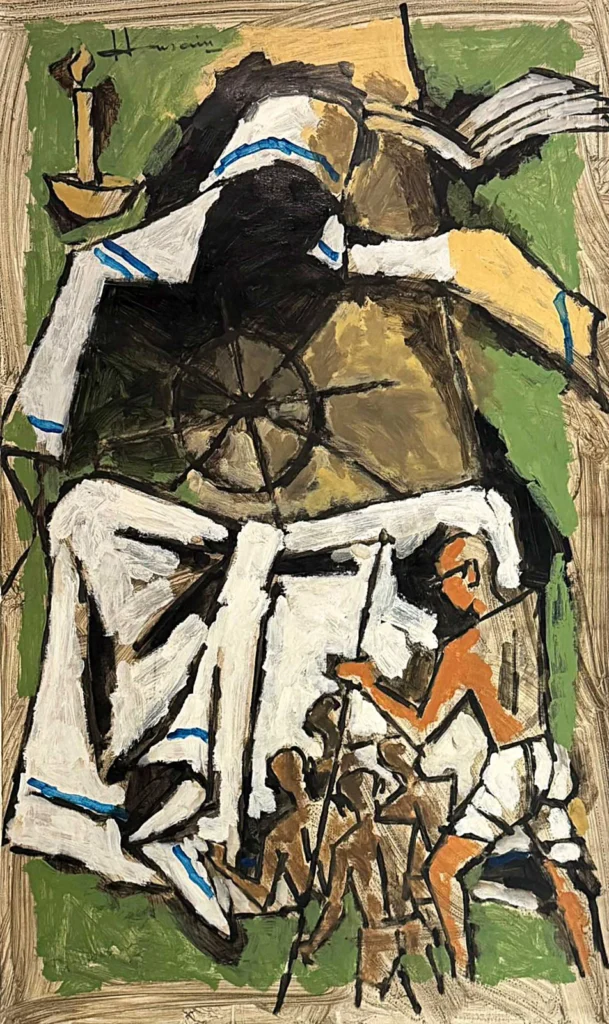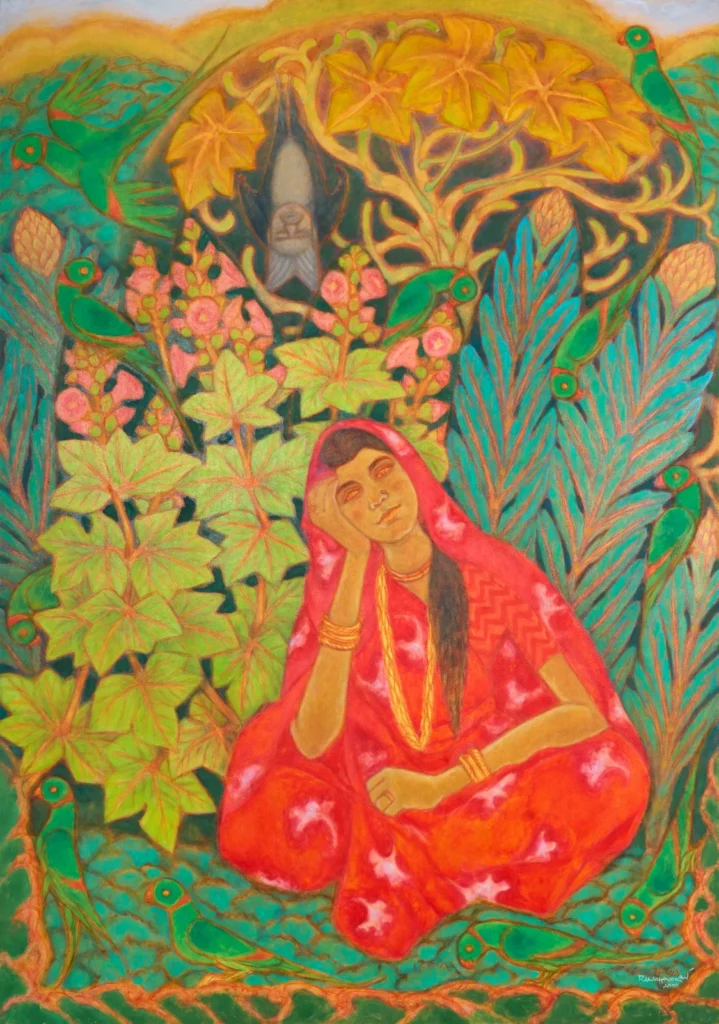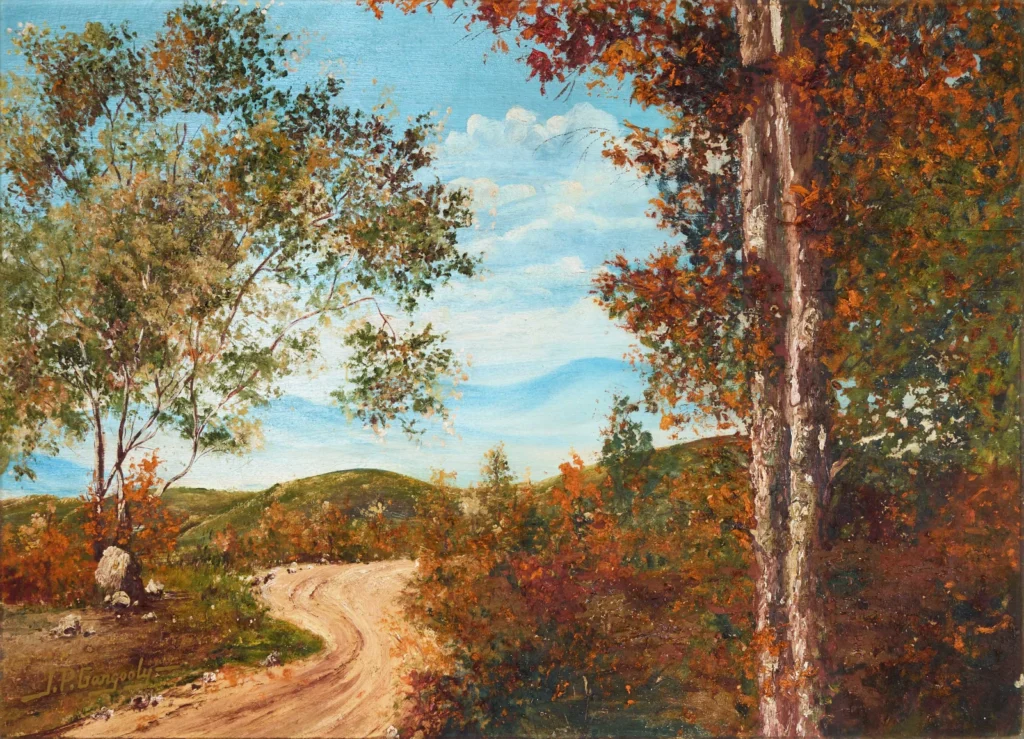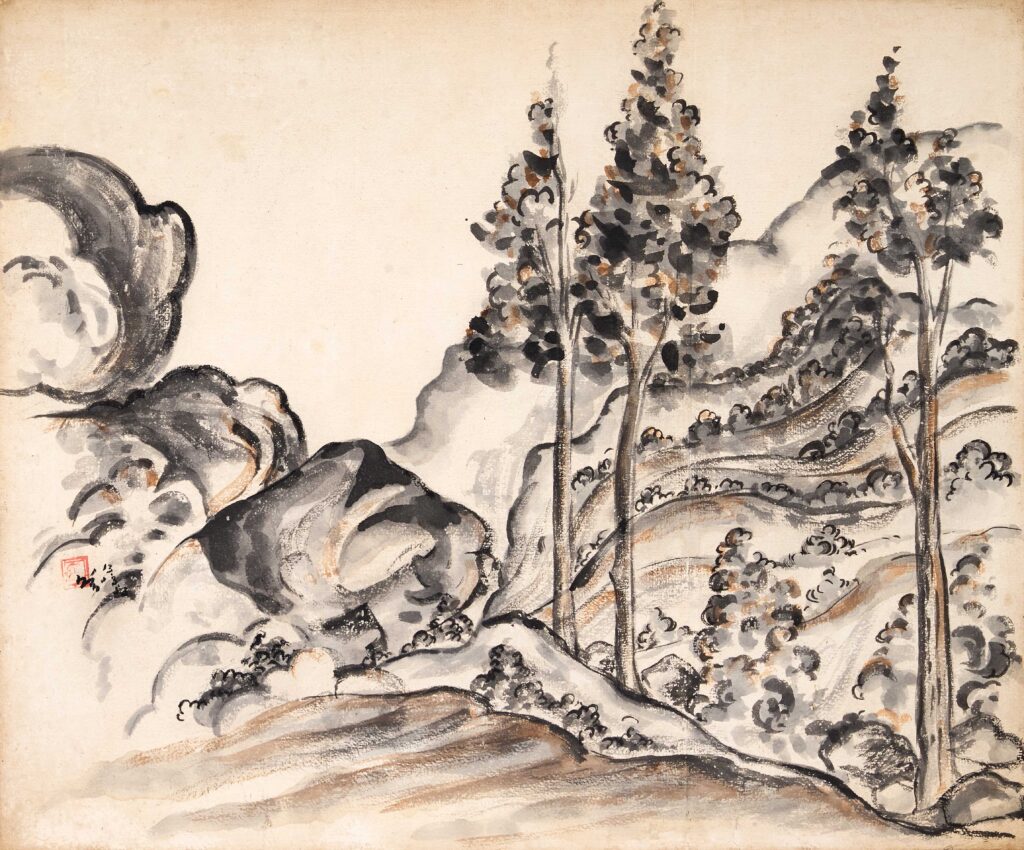AstaGuru’s upcoming ‘Collector’s Choice’ auction, taking place online on June 26 and 27, 2025, is set to showcase a compelling range of works by India’s most influential modern artists. This edition brings together rare archives, emotionally resonant canvases, and works that trace the evolution of Indian modernism across the 20th century.

With styles ranging from mythological reinterpretation to poetic figuration, the auction reflects how Indian artists responded to their times—through personal memory, public icons, and shifts in visual language. Six lots, in particular, offer a clear sense of the depth and diversity on display.
A standout entry in this auction is a rare archival lot featuring 35 handwritten letters and 14 envelopes by Rabindranath Tagore, addressed to sociologist Dhurjati Prasad Mukerji. Written between 1927 and 1936, the letters move between introspection and observation, revealing a lesser-known side of Tagore as he stepped away from public life to embrace his evolving identity as an artist. The correspondence also captures his philosophical and creative thought processes during a transitional period. Classified as a National Art Treasure and non-exportable, this lot presents one of the most significant literary offerings to appear in a modern Indian art sale.

Another powerful work is M.F. Husain’s large-format painting from around 2000, which features Mother Teresa and M K Gandhi. Known for his ability to express identity through form and movement rather than facial detail, Husain uses silhouette and attire to bring these two figures into focus. Painted in a restricted palette of black, white, brown, and blue, the work includes symbols like the chakra and lamp that anchor the figures in an Indian context. The painting doesn’t rely on overt emotion, but instead creates a solemn energy through visual restraint.
Ramachandran’s Visions of Ramdev – Ahalya in Red, painted in 2001, offers a reinterpretation of a well-known episode from the Ramayana. The figure of Ahalya is placed within an intense red palette, surrounded by foliage and temple-like forms that hint at a larger symbolic environment. The painting is not just mythological; it is layered with visual cues about awakening, containment, and transformation. Ramachandran’s work draws equally from classical Indian narratives and a modern painterly style rooted in ecological and cultural reflection.

In another visual register, J.P. Gangooly’s early 20th-century landscape captures a winding rural path, shaded by autumnal trees and backed by gentle hills. Executed around 1930, the work carries the meditative tone of Bengal’s early plein air movement. Gangooly’s soft tonal transitions and romantic naturalism hint at a generation of Indian painters beginning to adapt Western realism into a more localised visual idiom. The painting offers a glimpse into the formative years of modern Indian painting, where environment and emotion began to merge on canvas.
Krishen Khanna’s mixed media painting continues his decades-long engagement with the bandwalla figure, this time centring on a lone trumpeter. Standing in stillness, the musician carries themes of endurance, anonymity, and performance. Khanna’s approach to this subject has been consistent, yet it evolves with each work, shifting focus from spectacle to observation. The texture and composition create a grounded sense of presence, reflecting how street life and personal rhythm have influenced his practice over the years.

Nandalal Bose’s 1953 work in watercolour and ink offers a strong sense of rhythm and restraint. Influenced by the Bengal School and folk traditions, Bose’s post-Santiniketan work leaned into simplicity while retaining emotional weight. This piece, like the Tagore archive, is a designated National Art Treasure and is non-exportable. It offers a focused view of Bose’s later phase, where minimal elements were used to express movement, balance, and a deep understanding of form.
Together, these six lots mark out a timeline of Indian art where history, mythology, politics, and daily life converge. This Astaguru sale doesn’t just assemble works of value—it documents shifts in how artists across generations made sense of their world. Whether through letters, spiritual figuration, or landscape, each piece reflects an individual response to broader cultural and emotional currents. The upcoming auction stands as more than a market event—it’s a close look at how Indian modernism took shape and where its stories still live.





